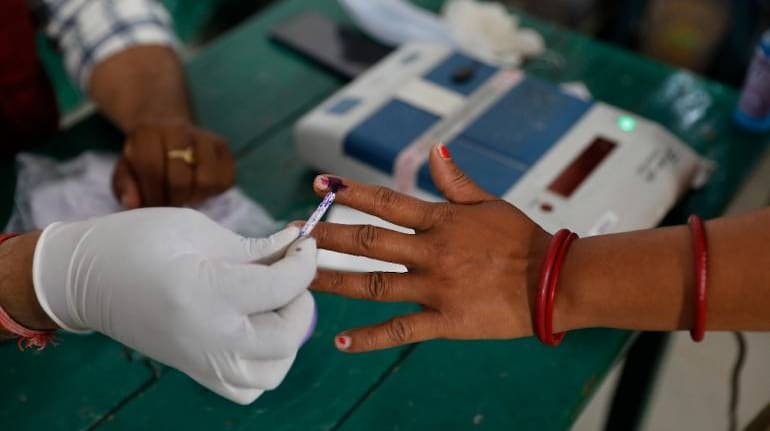



The elections in the three Hindi heartland states of Madhya Pradesh, Chhattisgarh and Rajasthan are being discussed only as a contest between the Bharatiya Janata Party (BJP) and Congress, and rightly so as the contest is really between these two parties. But one should not ignore the importance of smaller parties in these states.
The smaller parties including the independents have the potential to upset the electoral calculations of the two arch rivals despite Bahujan Samaj Party (BSP) and Samajwadi Party witnessing a decline in its support base in these three states. One should not forget, in assembly constituencies witnessing a tight contest between BJP and Congress, these smaller parties could become a spoiler for one or the other.
Track Record Of Smaller PartiesIn Madhya Pradesh, the BSP polled 7.2 percent votes during the 2003 elections, 8.9 percent in 2008, 6.2 percent in 2013 and 5 percent in 2018 assembly elections. In Rajasthan also its vote share declined from 7.6 percent during the 2008 assembly elections to 4 percent during the 2018 assembly elections.
The story remains the same in Chhattisgarh where its vote share declined from 6.1 percent during the 2008 assembly elections to 3.8 percent during the 2018 assembly elections. Other smaller parties also declined like the BSP. Either those parties have witnessed a decline in vote share or remained static.
In MP, the SP’s vote share declined from 3.7 percent during the 2003 assembly elections to 1.3 percent during the 2018 assembly election. The Gondwana Ganatantra Party’s vote share has remained more or less static both in Chhattisgarh and in MP over the last couple of decades.
In MP the GGP has polled marginally less than 2 percent votes in most elections except 2013 when its vote share declined to just one percent. In Chhattisgarh, it has always polled marginally less than two percent votes in all the elections held since 2003.
There are some parties which have sprung surprises abruptly like NPP polled 4.3 percent votes in Rajasthan during the 2013 assembly elections and JCC(J) polled 7.6 percent votes in Chhattisgarh assembly elections 2018.
Though the presence of these smaller parties have remained marginal, in closely contested elections they can make a difference by cutting into the BJP or Congress support base.
In the likelihood of a close contest in MP, SP could be a crucial factor. SP has put up candidates in 71 assembly constituencies in MP. There is a decline in SP’s support base, but despite this SP managed to win the Bijawar Assembly seat in MP and played a crucial role in the electoral contest in another 11 constituencies where its vote share was more than the winning margin.
Of these 11 constituencies, BJP won 8 seats, Congress won two seats while BSP won in Pathariya assembly constituency. Had SP not put up candidates, the Congress performance would have been much better in 2018.
The BSP also played a crucial role in 58 assembly constituencies of which it won two seats, Bhind and Pathariya, and polled more votes than the winning margin in another 56 assembly constituencies of which 28 were won by BJP and 27 seats by Congress. While BSP’s presence did not favour any particular party unlike SP, it has to be noted that it certainly made its presence felt in 58 constituencies.
The story in Rajasthan was not very different from MP with regard to the BSP in 2018. BSP won six assembly seats and its vote share was higher than the victory margin in 32 assembly seats which affected the prospects of BJP and Congress. Of these 32 assembly seats, BJP won 11 seats, Congress won 18 seats and three seats were won by the independents. In fact BSP’s presence in 2018 in Rajasthan in some way helped Congress as it managed to win a bigger number of marginal seats.
BSP In ChhattisgarhSince Chhattisgarh in 2018 was a swing election and Congress registered a big victory, BSP’s role in influencing the verdict was limited. BSP had won two assembly seats Jaijaipur and Pamgarh, but it polled more votes than the victory margin in seven assembly constituencies of which BJP won four and Congress three seats.
One can see that BSP did not influence the electoral verdict either adversely or favourably for Congress and BJP. But one should not forget BSP’s important role in the 2013 Chhattisgarh elections. It won only Pamgarh assembly seats, but polled more votes than the victory margin in 16 assembly seats of which 11 seats were won by the BJP while Congress won only 5 of these seats.
Thus BSP’s presence helped BJP in the close electoral contest in Chhattisgarh in 2013. During the 2008 assembly elections, BSP won Pamgarh and Akaltara assembly seats, but it polled more votes than the victory margin in 30 assembly seats of which 17 were won by the BJP and 13 won by the Congress. Again an indication that BSP presence had helped the BJP during the 2008 assembly election as the support base of BSP and Congress seems to be overlapping.
The story of how smaller parties performed will be known only after the results are declared. But they merit a close look given how they influenced electoral outcomes in the past.
Sanjay Kumar is a Professor at Centre for the Study of Developing Societies (CSDS). He is also a Political Analyst. Views are personal, and do not represent the stand of this publication.Discover the latest Business News, Sensex, and Nifty updates. Obtain Personal Finance insights, tax queries, and expert opinions on Moneycontrol or download the Moneycontrol App to stay updated!
Find the best of Al News in one place, specially curated for you every weekend.
Stay on top of the latest tech trends and biggest startup news.